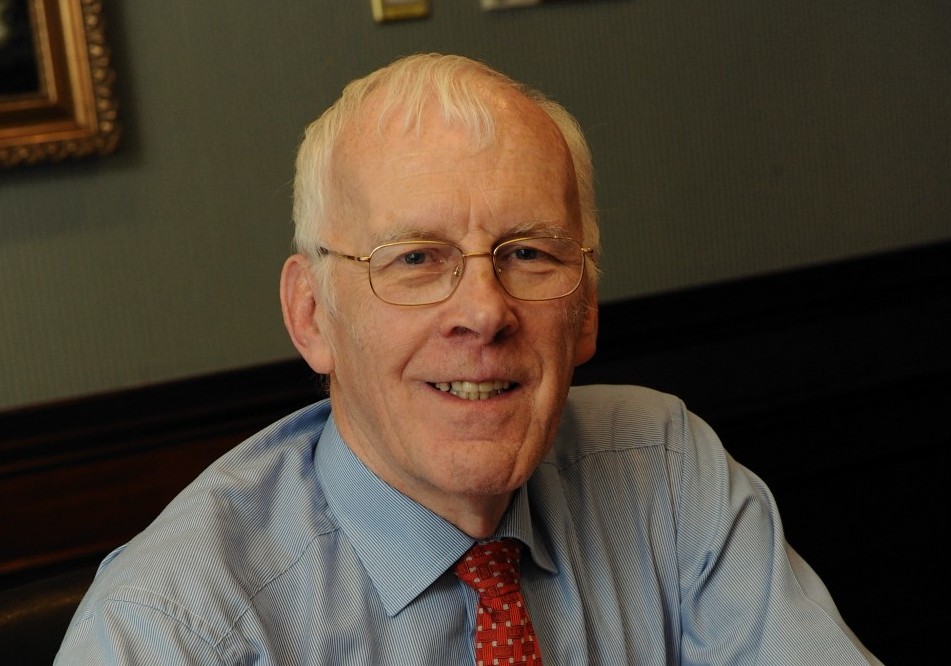He made his fortune and reputation by recognising the massive potential of the North Sea, and by his own estimation did “incredibly well” during the oil and gas industry’s boom years.
And now Sir Ian Wood has pledged an incredible £4.5million to ensure a bright future for Aberdeen and the rest of the region has a bright future long after what has been the lifeblood of the area’s economy runs dry.
The huge donation from the Wood Foundation to Robert Gordon University will be spent on turning the institute and the city into “world leaders” in the oil and gas industry for teaching, research and technology.
And it should keep the sector anchored in the north east long after operators have filled their last barrel.
The money is the second multi-million pledge made by Sir Ian and his family trust to benefit the north-east in the space of a less than a fortnight.
Earlier this month, it was announced the Wood Foundation was giving £10million to build a new patient and visitor car park at Aberdeen Royal Infirmary.
Now, it is hoped the gift to RGU will lure new talent from across the world to make Aberdeen a global centre of excellence for the oil and gas sector.
Sir Ian said he wanted the institute to encourage the supply chain of service and manufacturing firms to remain in the north east once the operators have left town – and maximise the industry’s lifespan in the face of dwindling barrel numbers.
He said last night: “The foundation is giving a lot of thought to what happens to Aberdeen in the medium term.
“Whichever way we look at it, and we might be lucky, we may have some additional oil reserves, by 2050 we are going to be producing perhaps 2,000 barrels a day.
“Now we are 1.4million barrels a day and in 1998 we were 4.2million a day.
“You can’t get away from the inescapable, we are on a depletion line.
“We should all be thinking about what is going to be done to help Aberdeen adjust to what is going to be a huge economic challenge.
“Part of that is trying to maximise oil and gas activity that stays in Aberdeen post-North Sea oil. That is an interesting challenge.”
Sir Ian gave £500,000 to RGU to establish the Oil & Gas Institute in November 2013, with the total investment becoming the second largest single donation to a university in Scotland.
RGU will use the money to set up new undergraduate and post graduate courses to equip students with the skills to lead the next era of oil and gas, with engineering, accountancy and law all target areas.
Sir Ian has been working with the university over the past six to seven months to develop key pillars of the institute’s work with decommissioning, drilling, operations and business the main focus.
He added: “The aim is to attract some really good new people, new teams, from elsewhere and how can we get RGU up from being just a strong player in Scotland to a strong player in the UK to then a strong player internationally in oil and gas.”
Sir Ian said he wanted to help create a “critical mass” so the supply chain would stay in Aberdeen beyond the North Sea years.
He said Houston still excelled when oil production in the United States had moved further afield.
He explained: “Houston has very little indigenous oil and gas right now.
“It is spread out in different parts of the states, in the Gulf of Mexico, but Houston has become this world-renowned centre.
“One of the key reasons is that it had critical mass in technology.”
Sir Ian, the former chairman of Wood Group, said that prolonging the oil and gas industry in the north east was one part of meeting the economic challenges ahead.
He said: “It has to be part of bigger programme of maximising quality of life in the city, make sure we have a good education, getting a good city centre and getting good transport links.”
His offer of £50million to help regenerate the centre of Aberdeen by creating a civic square on top of Union Terrace Gardens was rejected by the Labour-led Aberdeen City Council administration in 2013.
When asked if he felt a personal responsibility for safeguarding the future prosperity of the city, he said: “Aberdeen has had this huge, fortunate economic experience of suddenly – on its own doorstep – being exposed to a very lucrative economic opportunity.
“I as an Aberdonian have had the same. I was lucky and I was in the right generation at the right time. Therefore, I have done incredibly well out of oil and gas.
“So has Aberdeen, whatever people may say.
“The last thing I want is for the generation after next to look back and say ‘they took it all for themselves, they did incredibly well but look at the legacy they left us’. I don’t want to see this happening.
“Unless we waken up – and some of us are sleepwalking – we have got to be realistic, start planning and get some vision over what will happen over the next 40 years.”
The Wood Foundation is considering funding other projects in Aberdeen and Scotland, with Sir Ian keen to diversify the economy in the north east.
Food and drink, as well as tourism, have been identified as potential beneficiaries.
Professor Ferdinand von Prondzynski, principal of RGU, said the university was “extremely grateful for the huge generosity of The Wood Foundation.”
“Sir Ian’s leadership in the oil and gas industry is universally recognised, most recently in the response to the Wood Review on maximising recovery in the UK
Continental Shelf.
“It is hugely significant to RGU to have his support as we develop our ambitious plans for the institute.”
It is hoped the money will help to create 50 jobs at the institute over a number of years.










